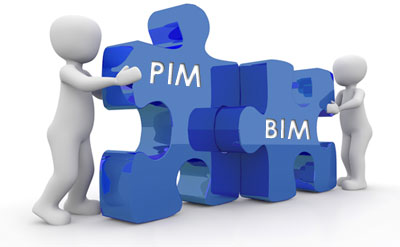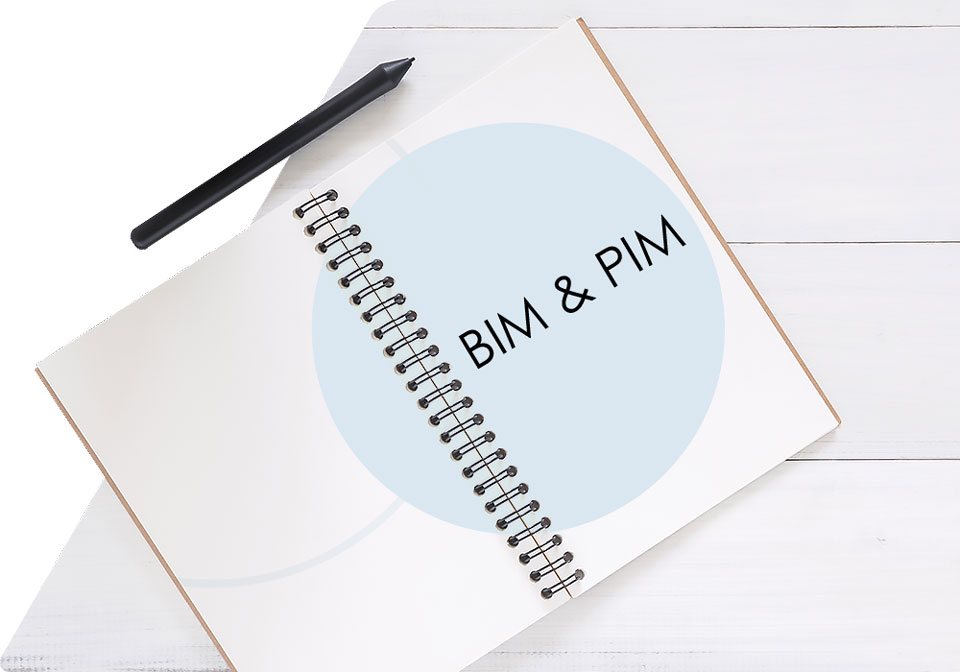Building Information Modeling (BIM)
Building Information Modeling (BIM) is a method of optimizing the planning, execution and management of buildings and other structures using software. All relevant building data is captured digitally and combined with each other. The aim of BIM is to make construction projects even more transparent to allow early decisions to be made on alternatives. BIM presents all relevant information at the right time with up-to-date content and this throughout the entire life cycle of the building.
Building Information Modeling (BIM)
The Goal of BIM
The goal of BIM is to make construction projects more transparent and to digitize them. All phases are taken into account: Design, planning, realization, operation and deconstruction. BIM presents important components with characteristic data. Therefore, it is advisable for manufacturers and distributors of building products to have a PIM system as a basis for BIM in order to maintain this product data efficiently.
Who needs BIM and what for?
Planners, specialist engineers, construction companies, facility managers and service providers benefit from BIM. Product data is made transparent and digitally accessible across all processes.
Example applications (use cases):
- Specialist planners can optimize components for air conditioning, heat pumps, ventilation systems, etc. in advance to ensure optimal interplay.
- Facility managers can analyze pipe problems digitally first and then pry open components laid under plaster in a more targeted manner.
Advantages
The advantages of a holistic BIM model are clear:
|
|
As a result, the productivity of the planning process can be increased in terms of costs, deadlines and quality.
Reasons to use BIM
All parties involved in construction projects face the challenge of digitizing their construction processes. Due to the infinite number of product data and their different data statuses, it is up to manufacturers and dealers to restructure and organize data with increasing digitalization and networking. The following specifications put further pressure on construction suppliers to deliver BIM data:
|
|
BIM Standardization
A common understanding and uniform specifications are essential if BIM is to become established. Only if the various players and suppliers in a construction project adhere to uniform standards will information be easily exchanged between the companies and the process steps and understood by the others.
Important standards for this are:
VDI 2552 with uniform terms up to processes and qualifications of the participants.
ETIM-BIM for uniform product categories, attributes, values and other specifications for the branches electric, heating / ventilation / air conditioning (HVAC), tools / ironmongery / works equipment, and building materials sectors
The one BIM standard that already implements all goals or is used by many companies does not yet exist. However, the standardisation efforts are progressing well. ETIM BIM is promising from INCONY's point of view: a first standard version of the ETIM MC classes is in the works for electrical and planned for HVAC. In addition, other standards such as VDI 3805 are to be integrated and the ETIM standard already includes many construction-relevant supplier sectors.

Connecting BIM and PIM - the key to digital product data management
Product data of the installed components (such as shower trays, wall boxes or fuse boxes) must be available in digital form in order to digitize the construction projects with BIM and thus further optimize the processes. This includes product characteristics such as length, width, height or material as well as a drawing. This BIM data does not usually come from the construction companies; instead, they request the data from their dealers or manufacturers.
However, manufacturers in particular do not only have to make their product data available for BIM. They usually need the product data for other purposes as well, such as for data sheets, catalogs, price lists, or even for product presentation on their websites or their own store. In addition, more and more retailers and customers are requesting product data from manufacturers in specific formats. PIM systems are used to maintain product data centrally and efficiently.
The PIM system stores product-related information media-neutrally and centrally in a database, so that it can only be entered once, enriched and output multiple times. This means that the data is stored centrally and always up-to-date and complete in one place, the "single point of truth". With a PIM system, products can be sorted into categories, characteristic data such as width, diameter and material can be maintained and product relationships for accessories or spare parts can be created. In PIM systems with an integrated media database, you can also upload images and drawings and assign them to the products.
Some PIM systems also offer BIM support to maintain product data in standardized BIM structures and then export it in a BIM-compliant manner, such as the technology-leading PIM ANTEROS.
BIM data is maintained efficiently and in high quality in a PIM system.
ANTEROS is the Technologically Leading PIM System and Ideal for BIM
With its PIM system ANTEROS, INCONY offers component manufacturers a professional, efficient program for web-based maintenance of product data. ANTEROS provides functions for fully integrated and high-quality product data management:
|
|
As a result, the complex requirements in the maintenance of product data become much more efficient, remain up-to-date and are always complete.
INCONY Supports You as a Construction Supplier with the Software ANTEROS
ANTEROS offers not only efficient product data maintenance, but also various implicit checks as well as test reports that you can add to, allowing you to create and constantly expand your product data in the best quality with comparatively little effort.











